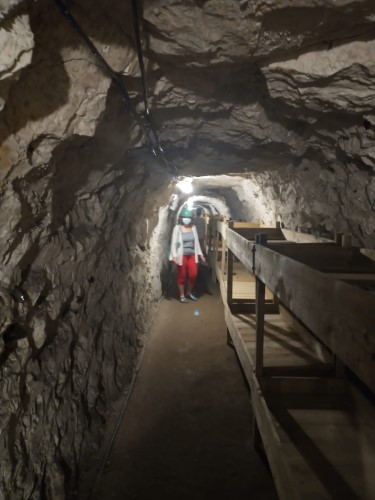Dover

|
51:7.112N 1:18.628E Sunday 15th July Today we visited two of Ramsgate's main attractions, namely the Ramsgate Maritime Museum, housed in the Clock House building in the dock and the Ramsgate Tunnels, a series of tunnels excavated under the town to act as air raid shelters during the second world war. The construction of the Clock House was completed in 1817, to act as a watch tower with commanding views of the harbour. In 1819, the tower installed a solar observatory and astronomical clock which was set to what was thought to be Greenwich Mean Time. This Ramsgate Mean Time was used by ships to accurately correct their chronometers from then until 1948, when it was realised that RMT was not accurate. Then GMT was adopted. A sign on the building refers to the fact that RMT was 5 minutes and 41 seconds faster than GMT.
Ramsgate, along with Dover, London and Southampton were heavily bombed in the second world war. The Ramsgate Tunnels were built into the cliff face and ran for over 3 miles under the town with 11 entrances so that everyone in the town was only 5 minutes away from an entrance to the tunnels when the air raid sirens sounded. We took a tour of the tunnels, seeing for ourselves what it was like to shelter there. It was very informative.
Monday 16th July We set off for Dover at 1.45pm, for the 3 hour, 15 mile trip. Having left Ramsgate Harbour we were able to sail the whole way. We sailed along the edge of the Gull Stream, a large ship channel, which avoids Goodwin Sands. Just before we turned to go down the side of the Gull Stream we were called up on the VHF by a tanker travelling in the same direction in the middle of the channel asking that we go astern of him as he couldn't alter course as he had to keep in the channel. We were able to confirm that we would not be crossing the channel so he motored on past us. As we neared Dover, we picked up a mayday message of a possible capsized boat nearby. Walmer life boat was launched and so was the air sea rescue helicopter. Nothing was found and we think that someone had mistaken the white capsule shape of a sea-going rowing boat which was making its way around Dover at the time, for the upturned hull of a capsized boat. Dover is a very busy harbour with large liners and ferries coming and going all the time. We called Dover Port Control for clearance to enter the harbour and were guided in firstly through the East entrance, then crossing over the West entrance, and finally into the Marina channel. We were then allocated a berth by the Dover Marina staff and moored at 4.30pm. We met up with an old colleague of Chris, who now lives in Deal, and we all went out for dinner. |

